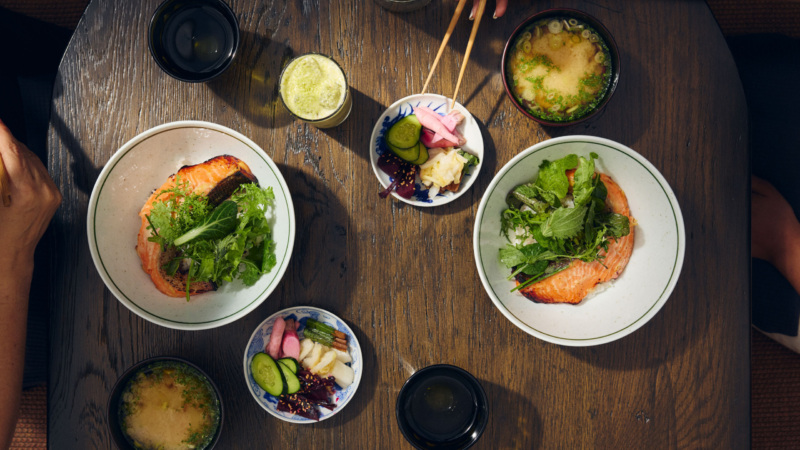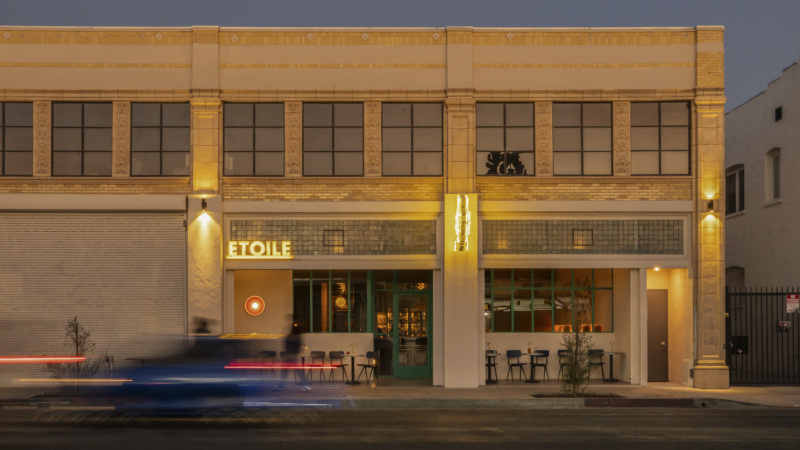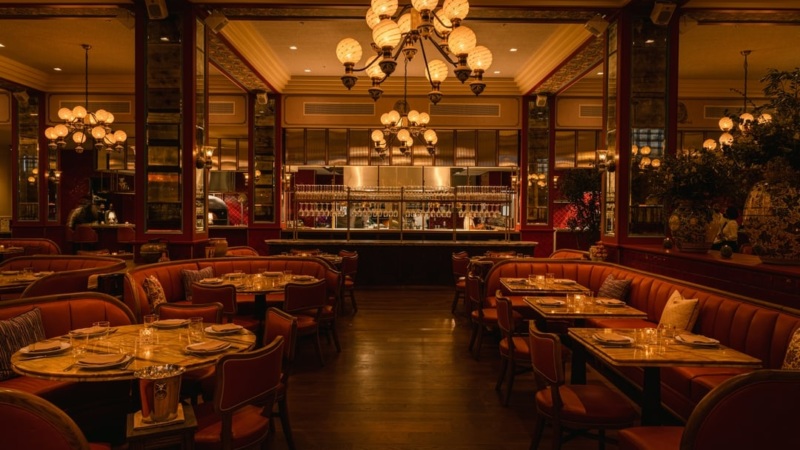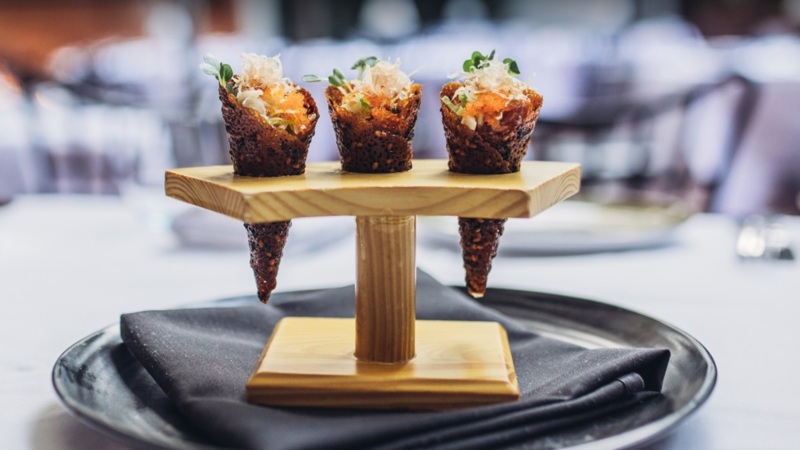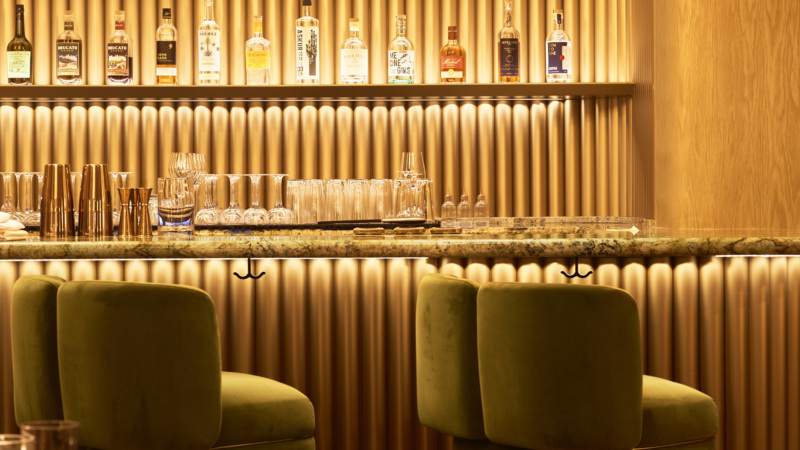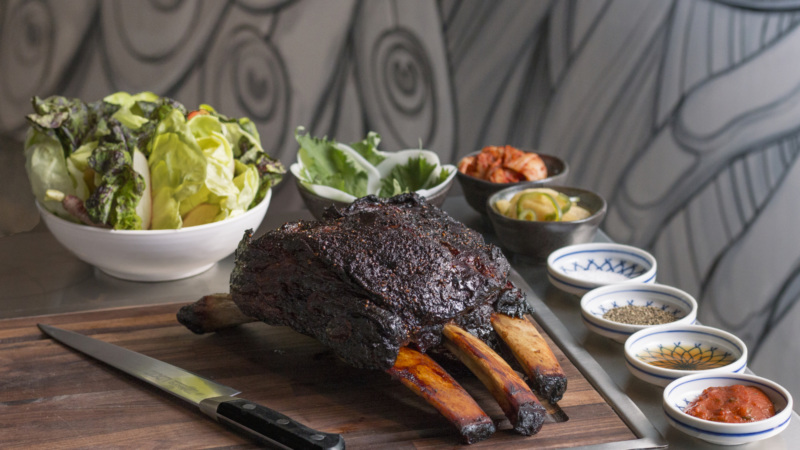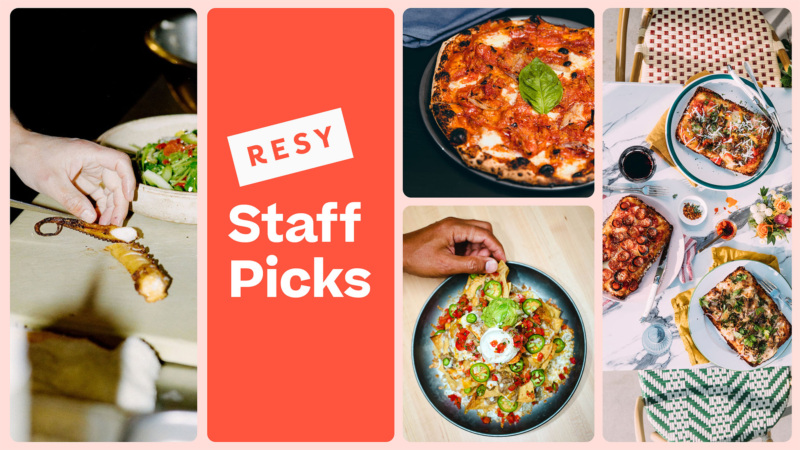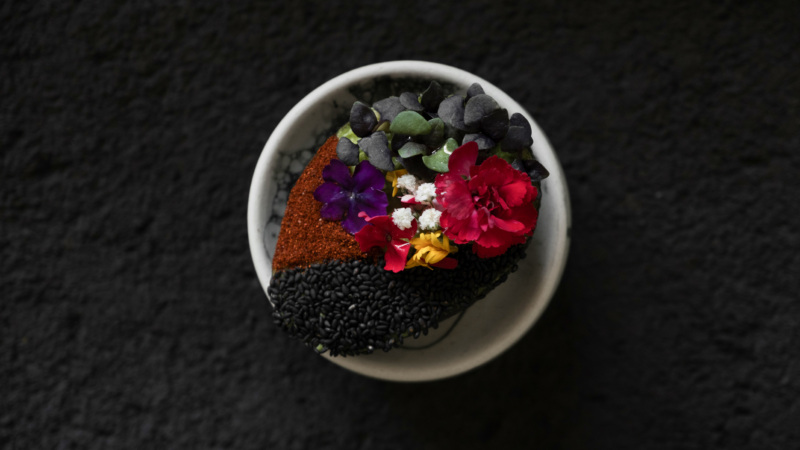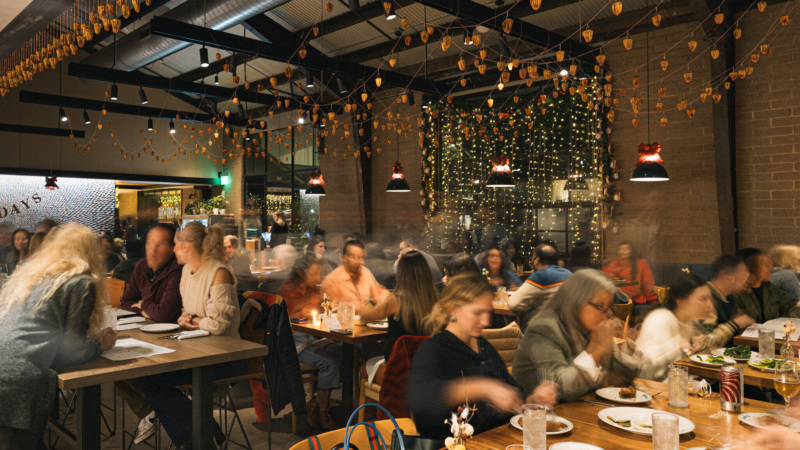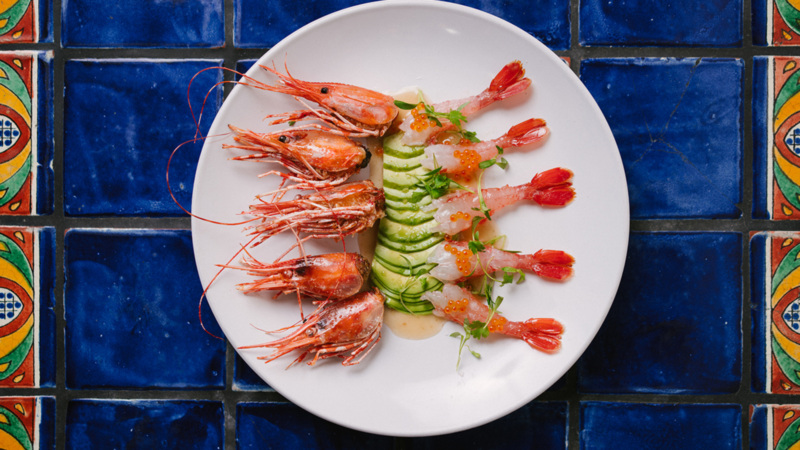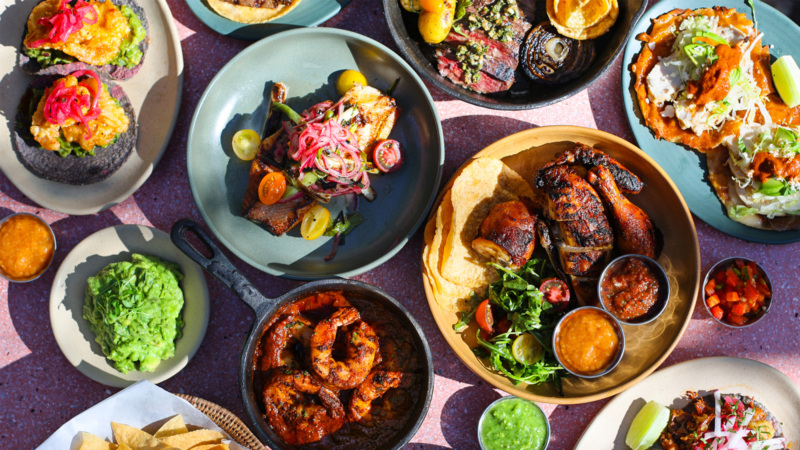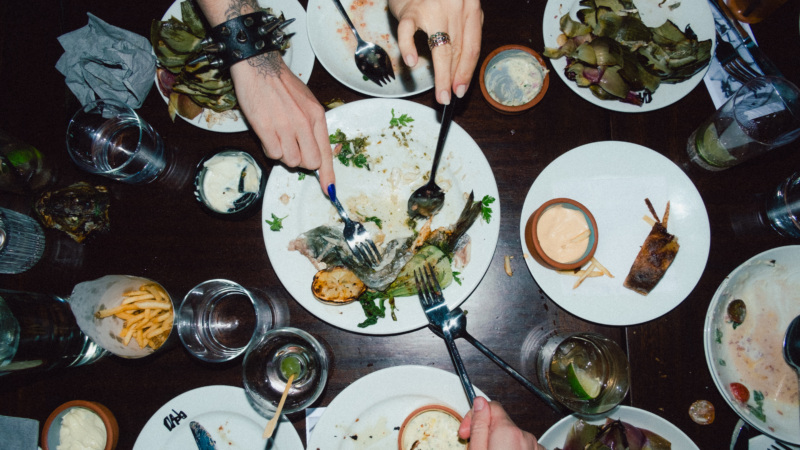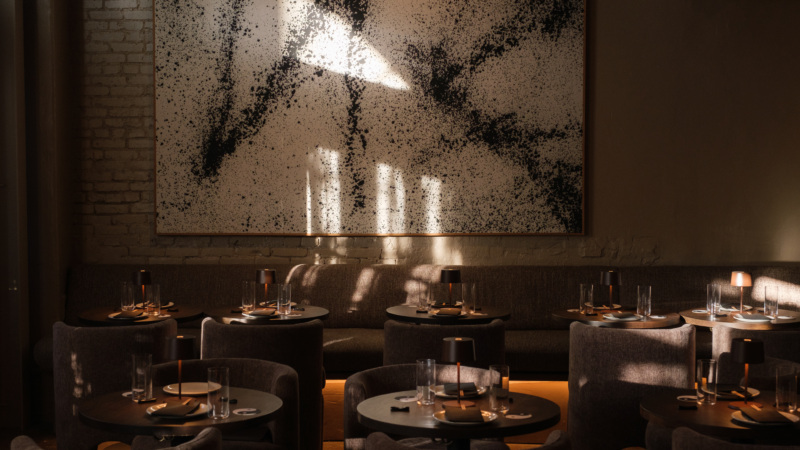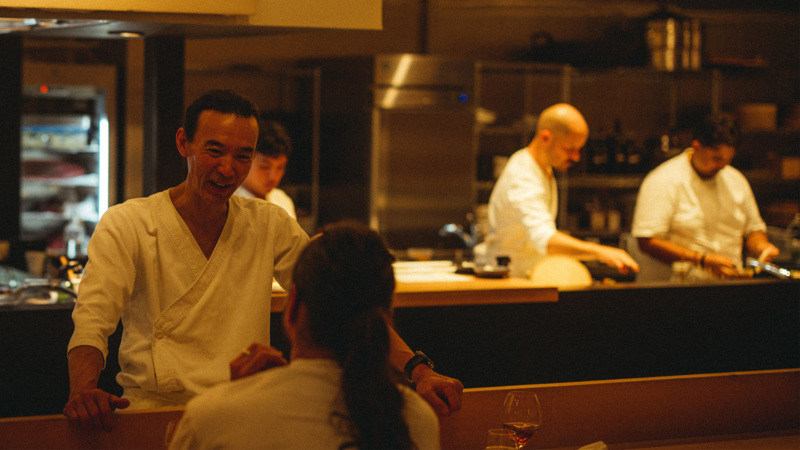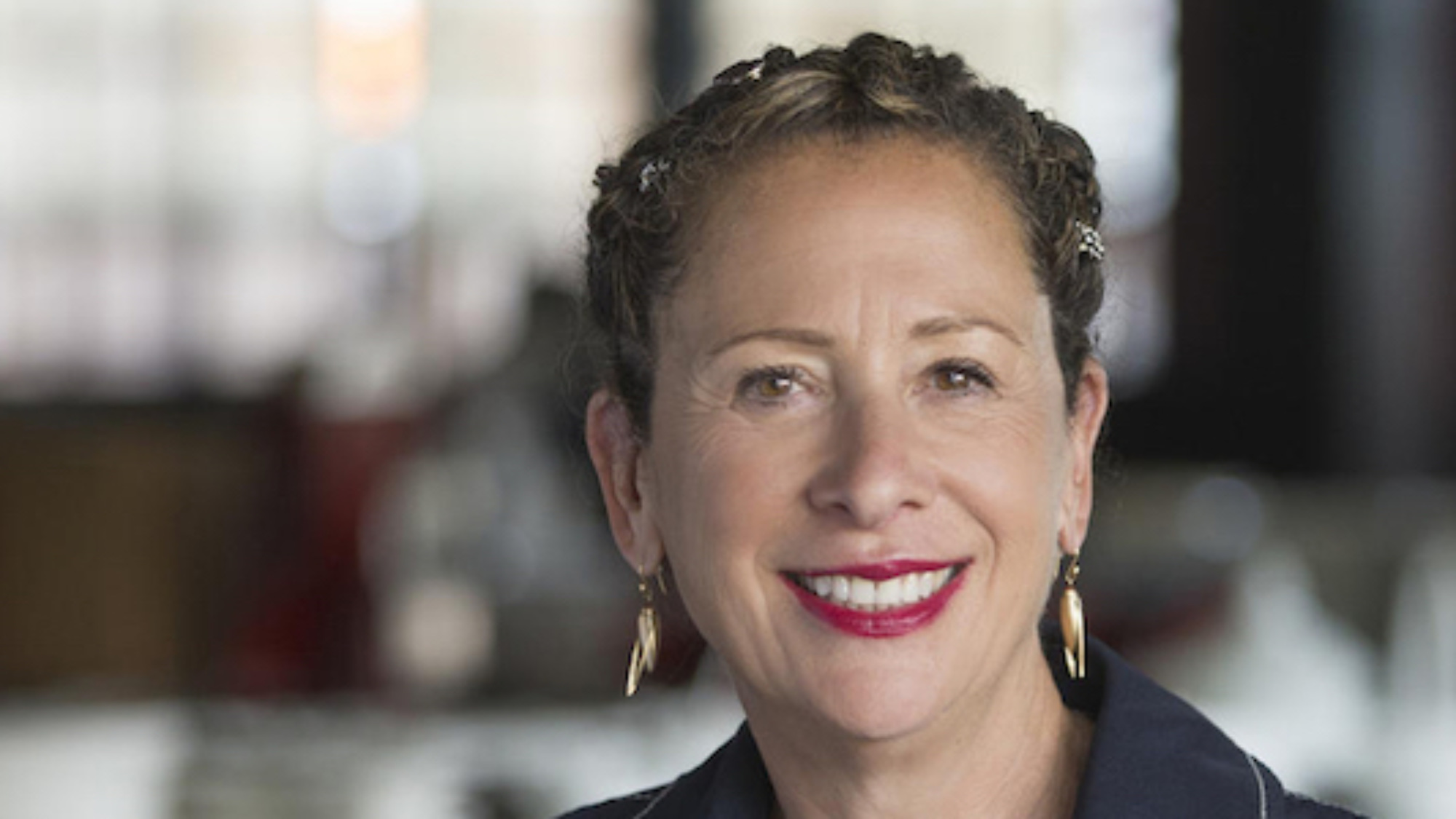
For Mozza’s Nancy Silverton, Flexibility Is the Future of Restaurants
Even by the standards of what the typical restaurateur has endured during the pandemic, Nancy Silverton has had a time of it.
As co-owner of Osteria Mozza, Pizzeria Mozza, and Chi Spacca, a bundled trio of some of Los Angeles’ most esteemed restaurants, Silverton gets the sort of A-list spotlight reserved for a small handful of restaurateurs. And the prominence of the Mozzaplex, as it’s known, means every little step gets noticed, as when her April diagnosis with COVID-19 was revealed in very public fashion.
So living in public has become second nature, perhaps, to Silverton. Yet, if most chefs receiving her level of attention tend to be a step or two removed from the kitchen, often managing expanding empires, Silverton has remained very rooted, physically, in her restaurants. Regular diners, especially at the tonier Osteria Mozza, grew familiar with her presence in the kitchen, often behind its white-marble mozzarella bar.
And if exceptional pizza has become commonplace in L.A., it’s easy to forget how groundbreaking Mozza was when it opened in 2007 — its counter seats, with their view of what at the time was a novel wood-burning oven, as hard to score as courtside Lakers tickets. Silverton is of that era of chef who, even after all the accolades, wants to stay in her kitchen; even during our recent conversation, she paused mid-sentence to give her staff instructions on cleaning up a mess. (“Don’t we have something better than a broom with a cloth on it?”)
Oddly, Mozza, in its way, is a coda to Silverton’s longer career — one that has defined so much of how Angelenos dine today. The San Fernando Valley native was the opening pastry chef for Wolfgang Puck at his original Spago; and the same at Campanile, which she opened in 1989 with then-husband Mark Peel and their partner Manfred Krankl. Next door, Silverton and Peel also opened a bakery, La Brea, which introduced the city to proper sourdough bread, much as Campanile would be a template for nearly every California-tinged Italian restaurant from Santa Barbara south. And if La Brea sounds familiar, a name you might have seen at the supermarket, well, there’s a reason for that.
Perhaps that’s why, even after a particularly acute dose of the pain all restaurants have faced this year, Silverton remains upbeat about what the future holds. (Interview was edited for length and clarity.)
▪️
This has been quite the year — for you and for Mozza — hasn’t it?
I think it’s been quite the year for everybody, hasn’t it? Everybody’s straight and narrow road has been thrown lots of curves.
But you closed pretty early on.
We closed down March 15, and we closed because we got word from our mayor, that all restaurants would shut down that evening. Takeout and delivery were allowed to remain open.
I don’t know if you’ve been to our restaurants, but you know there’s three restaurants on the corner. And the one that’s connected with Spacca, our third and smallest restaurant, also has a to-go component called Mozza2Go. So we’ve always had a to-go business, which was great because we didn’t have to do the amount of work a lot of restaurants had to do in figuring out how to do to-go.
That went on for maybe 10 days, two weeks, and then I tested positive and I had to close down. We were closed here for close to a month, and then reopened our to-go. And then reopened dining for the Osteria. And we were only open for two weeks — and the pizzeria only open for two days — and that’s when in-dining got closed down.
So, you do everything you need to comply with all of the guidance, and make sure you’re serving food and opening up your dining room in the most healthful way. And you hire everybody back, or those that you can, you reorder your food. And then two weeks later, you shut it down again.
Now, luckily we stayed one step ahead in this scenario. We had already completed converting our parking lot in the back of the three restaurants into an outdoor dining space, so we were able to open up the night that indoor was shut down. And we extended, actually, to the block in front of the pizzeria, which is Highland Ave. … So you know, look. We have a little bit going on. We’re able to hire back a couple handfuls of workers. But it’s obviously nowhere near the level of pre-Covid. We’re just simply trying to sustain ourselves.
You also pivoted Chi Spacca to be a community kitchen for restaurant workers.
Yes, this was at the very beginning. We closed on a Sunday, which was March 15. On March 17, I got a call from the Lee Initiative, asking if we would join them in providing meals for out-of-work restaurant workers.
That was great, ‘cause right away that gave us the opportunity to hire a few more people, and also to make those that were involved in that charitable kitchen feel as if they were contributing. And emotionally, that’s a big part of this whole pandemic, is trying to feel like you’re doing something to make things better.
We had to close that down when we closed down the restaurants. But then we were asked by World Central Kitchen to provide 100 meals, five days a week, for hospital workers. So when the Osteria reopened indoor dining, we switched to that charity. And we also, since then, have taken back the restaurant relief. So we’re doing two charitable kitchens, out of two of our restaurants.
Not that you’ve had tons of free time, but what else did you do to keep busy and sane during COVID? I’m guessing you did not join the sourdough baking craze? Like, you already got that out of your system.
Yeah. [laughs] Although, I baked a little. I baked a few sweets. I made some doughnuts, and I made one of my favorite little almond tarts that I love to make.
Definitely the first couple weeks I was pretty busy, with keeping Mozza2Go busy and working with restaurant workers’ relief. As soon as I had to go back home, and I was home for about five weeks, I really did do a lot of cooking then.
And I enjoyed it, because I don’t cook at my house in Los Angeles anymore, I don’t have any kids that live with me. I’m always at work, and when I entertain, I entertain in my backyard and most of the time it involves everybody getting together for a great hamburger. I cook when I spend my summers in Italy; that’s where all of my home cooking gets its play.
So this was the first time in years I cooked at home at night, and it was fun. I had nowhere I had to be, and I had the time. I wasn’t rushed.
One thing I often think about is, we’re in an era when chefs have these steep fame curves. They can burn bright and then it goes away. And you’ve been doing this a long time. For years, someone could walk into Mozza, and see you behind the counter most nights. So what advice would you have — for both chefs and diners — to keep in mind. What’s the long view?
First of all, I am a definite believer that we need to listen to science, right? And so, I am a lot more understanding of the curveballs. It’s what we have to listen to. And I think we have to just be adaptable, and that’s what we’re doing.
As far as our customers, I think they have to understand that … we’re doing the best we can, and you’ve got to bear with us. Across the board, everybody’s menu has been greatly reduced because nobody can bring back their entire staff, because they can’t afford to, and also because we can’t crowd our line, you know, to cook food. We can’t have people standing right next to each other.
So, menus are reduced. A lot of product is not consistently available, so we’re going to be running out of things. Or we can’t get things. Our prices are increased. You know, I think there’s a lot of understanding on both the restaurants and the customers’ parts, that these are really challenging times, and we’re all just trying to do the best we can.
Recently, there was something printed that, last time it was checked by the Health Department, close to 100 percent of restaurants in Los Angeles, were complying with the necessary restrictions. Which is great to hear. I don’t want those few people out there to spoil it for the rest of us.
A while back, you and Michael [Krikorian, a former reporter and Silveron’s longtime boyfriend] wrote a piece in the L.A. Times that received a fair amount of backlash. After a chaotic few months, what are your thoughts now about how restaurants are meant to serve a community?
There’s no question how restaurants serve a community, on so many levels. From the diner, what does a restaurant mean to them — or, at least, what they think of as their special neighborhood restaurant? How many celebratory meals have they had? How many memories were shared?
In having a restaurant, the supply chain is so deep — from the people we employ to the taxes that we pay, to the purveyors we support, to the countless jobs that we provide.
And when people don’t respect that, it’s just very, very disconcerting, you know? It really is. And especially now during times that are tough for everybody in a business, I think people need to open up their hearts a lot more than sometimes they do.
I also think about your pizzaioli. You not only created these restaurants, but you also taught this whole team how to perfect a really tricky art. When I watch them at work, everything is seamless. Now, during COVID, everyone has been cooking, everyone has discovered you can make bread, you can make pizza. What would you tell folks thinking, “This was just my COVID hobby.” What turns someone into a really good cook long-term?
You know, I think people are not going to go back, which is a good thing. A bad thing for the restaurant business, of course, because we want people just to eat out.
I’m saying that tongue in cheek! I think it’s a good thing people have rediscovered their kitchens, they have rediscovered that there is joy in preparing a meal at home, sitting down in a family kind of a situation and eating together. And I don’t think that will go away.
Let’s consider Mozza a year from now. Is it going to be as it was? Is it going to be different? Was this an opportunity to try things a different way?
I think it is a chance to try things in a different way. I was talking to Kevin Boehm from the Boka Restaurant group in Chicago. He was in last night. And we both agreed that, having this time to really focus on the way business is run? A lot of things we did in the past were very slow in changing. We added layers and layers and layers. Looking back at them, we don’t necessarily need all those. We can do a lot more simply than we’ve done before. Among other things, we’re having people wear many more hats than they did before, and that’s not a bad thing.
Yeah, it’s been fascinating to see restaurant professionals be reminded that real restaurant jobs involve wearing all hats.
Yep, and we forget that. But that’s definitely going to be different.
But I’ve always been someone that’s tried to teach the people that I work with to really reach back to products and respect the ingredient. In operating these two new charitable kitchens, where we’re given a very small budget for each meal, they’re getting so good at coming up with delicious meals that they can bring in on a very low budget. I think that it’s been challenging, and they like the challenge, of having to be careful with the ingredients they use and the price point at which they’re purchasing them, and to not be wasteful.
A couple other things that have been really positive? Because of the amount of pizza dough we go through at our pizzeria and at Mozza2Go, we haven’t had the space to actually make the dough and shape the dough ourselves. It’s done for us at one of the local bakeries, with my formula. But the bakery had to shut down because of COVID, so we’ve been making all our dough here.
Whereas before, everybody involved in Mozza2Go and the pizzeria, if you asked them, “How did you make the dough?” They would say, “Oh, we pick up the phone and we order it and the next day, we open the door and the truck brings it in.” Now they’ve all learned how to make the dough and shape the dough, and they have a lot more respect. That’s a definite silver lining. They’re so much more in the process, and now they don’t want to waste it.
So we’ve come up with a new dish for the pizzeria, a pizza fritti dish where we’re taking fried dough, and we’re rolling it the next day in cheese and Italian herbs and spices, and it’s a great little antipasti. And they’re using up the old dough for that, because they don’t want to throw it away. Now they’re working too hard to waste it.
On September 1, Nancy Silverton is hosting a virtual interactive cooking demonstration, followed by a live Q&A. This Resy at Home Experience is exclusive to Resy users who add their American Express Cards to their Resy profile. Learn more about this experience, and others from award-winning chefs, here.
Jon Bonné is Resy’s managing editor. Follow him on Instagram and Twitter. Follow @Resy, too.

